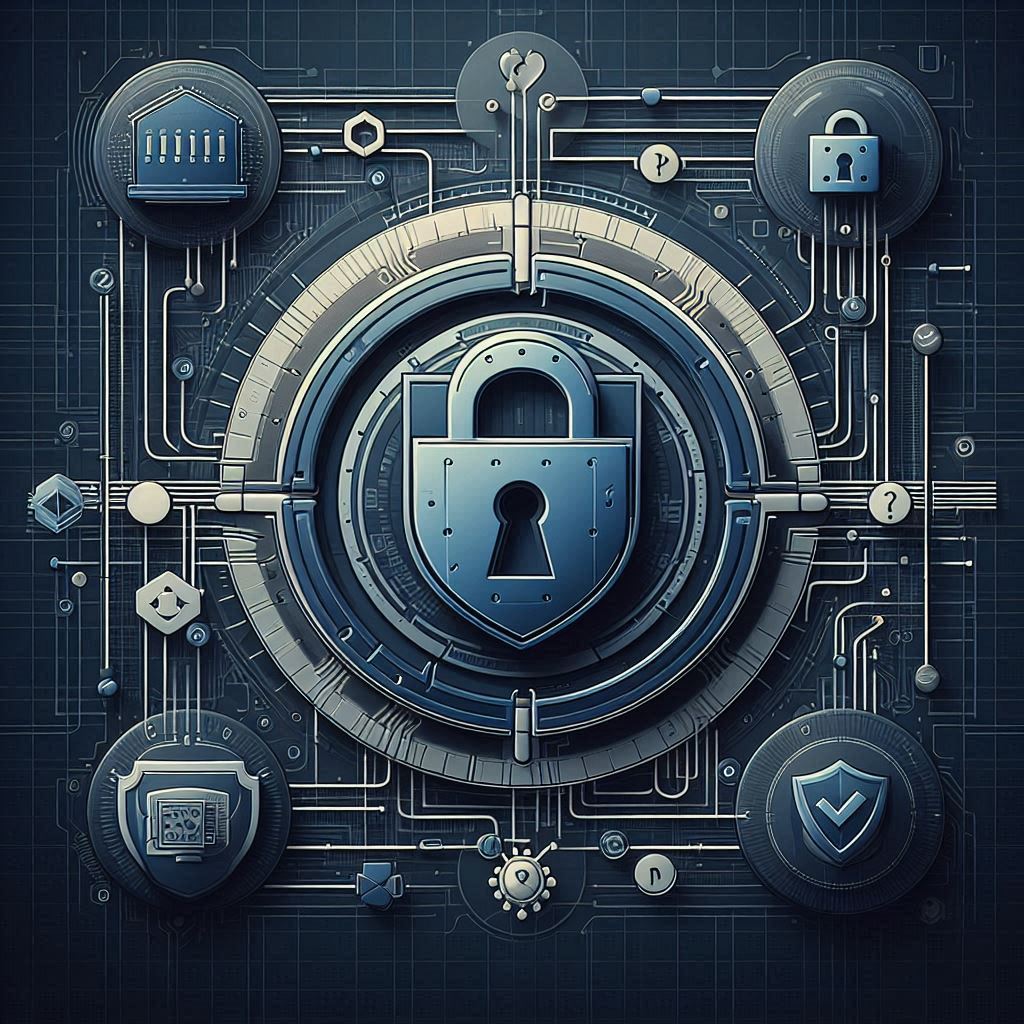Introduction
In our increasingly digital world, the importance of digital privacy and cybersecurity cannot be overstated. As technology advances, so do the methods employed by cybercriminals to exploit vulnerabilities and compromise sensitive data. Understanding digital privacy and implementing robust cybersecurity measures is essential for individuals, businesses, and governments to protect against the ever-evolving threats in the digital landscape. This comprehensive guide explores the complexities of digital privacy and cybersecurity, including current challenges, best practices, emerging trends, and future directions.
The Evolution of Digital Privacy and Cybersecurity
Historical Context and Development
Early Internet Security Measures
The concept of digital privacy and cybersecurity has evolved significantly since the inception of the internet. In the early days of the internet, security measures were rudimentary, with basic encryption techniques and password protection being the primary safeguards. The primary focus was on ensuring that information could be transmitted over networks without being easily intercepted.
The Rise of Sophisticated Threats
As the internet grew, so did the sophistication of cyber threats. The late 1990s and early 2000s saw the emergence of more advanced forms of malware, including viruses, worms, and Trojans. The increased use of the internet for financial transactions and sensitive communications highlighted the need for stronger security measures. This period marked the beginning of more complex encryption algorithms and the development of comprehensive cybersecurity frameworks.
Key Concepts in Digital Privacy
Understanding Digital Privacy
Definition and Importance
Digital privacy refers to the protection of personal and sensitive information that is stored, processed, or transmitted electronically. It encompasses the right to control how one’s personal data is collected, used, and shared. In an era where personal information is a valuable commodity, safeguarding digital privacy is crucial for maintaining individual autonomy and security.
Data Collection and Consent
One of the fundamental aspects of digital privacy is ensuring that individuals are aware of and consent to the collection and use of their data. This involves transparent data collection practices and providing users with clear options to manage their privacy settings. Consent must be informed, meaning individuals should understand what data is being collected, how it will be used, and who will have access to it.
Privacy Regulations and Frameworks
General Data Protection Regulation (GDPR)
The General Data Protection Regulation (GDPR) is a comprehensive data protection regulation enacted by the European Union (EU) in 2018. It establishes strict guidelines for the collection, processing, and storage of personal data. Key principles of GDPR include data minimization, purpose limitation, and data subject rights. GDPR has set a global standard for data protection and influenced privacy regulations in other regions.
California Consumer Privacy Act (CCPA)
The California Consumer Privacy Act (CCPA) is a landmark privacy law in the United States that grants California residents certain rights regarding their personal data. Enacted in 2020, the CCPA provides consumers with the ability to access, delete, and opt-out of the sale of their personal information. The CCPA represents a significant shift towards greater transparency and control over personal data in the U.S.
The Landscape of Cybersecurity
Types of Cyber Threats
Malware and Ransomware
Malware, short for malicious software, includes various types of software designed to harm or exploit computer systems. This category includes viruses, worms, Trojans, and spyware. Ransomware is a particularly insidious form of malware that encrypts a victim’s files and demands a ransom for their release. Ransomware attacks can have devastating consequences for individuals and organizations, leading to data loss and financial damage.
Phishing and Social Engineering
Phishing is a common cyber attack method that involves tricking individuals into divulging sensitive information, such as login credentials or financial details. Phishing attacks often use deceptive emails or websites that appear legitimate. Social engineering refers to the manipulation of individuals to gain unauthorized access to systems or information. Both phishing and social engineering rely on exploiting human psychology rather than technical vulnerabilities.
Denial of Service (DoS) Attacks
Denial of Service (DoS) attacks aim to disrupt the availability of a network or service by overwhelming it with a flood of traffic. A Distributed Denial of Service (DDoS) attack amplifies this by using multiple compromised devices to launch the attack. DoS and DDoS attacks can cause significant downtime and disrupt business operations.
Cybersecurity Frameworks and Standards
National Institute of Standards and Technology (NIST) Cybersecurity Framework
The NIST Cybersecurity Framework provides a set of guidelines for managing and reducing cybersecurity risks. It is organized into five core functions: Identify, Protect, Detect, Respond, and Recover. The framework is designed to help organizations of all sizes and sectors improve their cybersecurity posture by providing a structured approach to risk management.
ISO/IEC 27001
ISO/IEC 27001 is an international standard for information security management systems (ISMS). It provides a systematic approach to managing sensitive information and includes requirements for establishing, implementing, maintaining, and continuously improving an ISMS. Compliance with ISO/IEC 27001 helps organizations protect their information assets and demonstrate their commitment to cybersecurity.
Best Practices for Digital Privacy and Cybersecurity
Protecting Personal Data
Strong Passwords and Authentication
Using strong, unique passwords is essential for protecting online accounts and data. Passwords should be complex, combining letters, numbers, and special characters. Multi-factor authentication (MFA) adds an extra layer of security by requiring additional verification, such as a code sent to a mobile device.
Encryption and Data Protection
Encryption is a key technique for protecting data both in transit and at rest. Encryption algorithms encode data so that it can only be accessed by authorized individuals with the appropriate decryption keys. Implementing encryption for sensitive communications and data storage helps prevent unauthorized access and data breaches.
Securing Network and Systems
Regular Software Updates and Patching
Keeping software and systems up-to-date is crucial for defending against known vulnerabilities. Software developers regularly release updates and patches to address security flaws and improve functionality. Applying these updates promptly helps protect against exploits and reduces the risk of cyberattacks.
Firewalls and Intrusion Detection Systems
Firewalls act as a barrier between a network and external threats, controlling incoming and outgoing traffic based on predefined rules. Intrusion detection systems (IDS) monitor network traffic for signs of suspicious activity and potential threats. Together, firewalls and IDS help safeguard networks from unauthorized access and malicious activity.
Enhancing Organizational Cybersecurity
Employee Training and Awareness
Employee training is a vital component of cybersecurity. Educating employees about cyber threats, phishing attacks, and best practices helps create a security-conscious culture. Regular training sessions and awareness programs can reduce the likelihood of human error and improve overall security posture.
Incident Response Planning
Developing an incident response plan ensures that organizations are prepared to handle cybersecurity incidents effectively. The plan should outline procedures for detecting, responding to, and recovering from incidents. Regular testing and updating of the plan help ensure that it remains effective in addressing emerging threats.
Emerging Trends in Digital Privacy and Cybersecurity
Artificial Intelligence and Machine Learning
AI-Powered Threat Detection
Artificial intelligence (AI) and machine learning (ML) are increasingly being used to enhance cybersecurity. AI algorithms can analyze vast amounts of data to identify patterns and detect anomalies that may indicate cyber threats. Machine learning models can adapt to new threats and improve detection accuracy over time, providing more proactive and adaptive security measures.
Automated Response Systems
Automated response systems leverage AI to respond to cybersecurity incidents in real-time. These systems can quickly identify and mitigate threats, reducing the time between detection and response. Automated responses help minimize the impact of attacks and enhance overall security efficiency.
Privacy Enhancing Technologies (PETs)
Data Anonymization and Masking
Privacy-enhancing technologies (PETs) focus on protecting personal data while still enabling its use for analysis and research. Data anonymization involves removing or altering personally identifiable information (PII) to prevent it from being linked to individuals. Data masking replaces sensitive data with fictional data in non-production environments, ensuring that real data remains secure.
Secure Multi-Party Computation
Secure multi-party computation (MPC) is a cryptographic technique that allows multiple parties to collaborate on data analysis without revealing their individual inputs. MPC ensures that sensitive data remains confidential while enabling joint computations. This technology is valuable for scenarios where data sharing is necessary but privacy must be maintained.
Regulatory and Compliance Developments
Global Data Protection Regulations
As concerns about data privacy grow, governments and regulatory bodies are introducing new regulations to protect personal information. These regulations often require organizations to implement specific data protection measures and demonstrate compliance. Staying informed about global data protection laws is essential for organizations operating in multiple regions.
Compliance with Emerging Standards
Organizations must adapt to emerging cybersecurity standards and frameworks to ensure ongoing compliance. This includes staying updated on industry best practices and integrating new security measures as technology evolves. Compliance with evolving standards helps organizations maintain robust cybersecurity defenses and mitigate risks.
The Future of Digital Privacy and Cybersecurity
Balancing Privacy and Innovation
As technology continues to advance, striking a balance between privacy and innovation will be a key challenge. Emerging technologies, such as artificial intelligence and the Internet of Things (IoT), offer significant benefits but also raise privacy concerns. Ensuring that these technologies are developed and implemented with privacy considerations in mind will be crucial for maintaining trust and security.
Evolving Threat Landscape
The threat landscape is constantly evolving, with cybercriminals developing new techniques and exploiting emerging vulnerabilities. Organizations and individuals must remain vigilant and adaptive to address these changing threats. Continuous monitoring, threat intelligence, and proactive security measures will be essential for staying ahead of cybercriminals.
Collaborative Efforts for Cybersecurity
Cybersecurity is a collective responsibility that requires collaboration between governments, businesses, and individuals. Information sharing, joint initiatives, and public-private partnerships can enhance overall security and address global cyber threats. Collaborative efforts will play a vital role in building a safer digital environment for everyone.
Read More Popular
-
 Embracing Change: The Evolution of Learning
Embracing Change: The Evolution of Learning -
 Navigating Your Journey to Success: Studying and Living in the USA
Navigating Your Journey to Success: Studying and Living in the USA -
 Stay Ahead: Top Trending Search Keywords of 2024
Stay Ahead: Top Trending Search Keywords of 2024 -
 Data-Powered Insights
Data-Powered Insights -
 Personalized Learning and Adaptive Technologies
Personalized Learning and Adaptive Technologies -
 What jobs will be in demand in 2024
What jobs will be in demand in 2024 -
 Costing Finance and Investing: A Comprehensive Guide to Building Wealth in the USA
Costing Finance and Investing: A Comprehensive Guide to Building Wealth in the USA -
 Climate Change and Sustainability: Navigating the Path to a Resilient Future
Climate Change and Sustainability: Navigating the Path to a Resilient Future -
 Beyond the Stars: The Frontier of Space Exploration and Technology
Beyond the Stars: The Frontier of Space Exploration and Technology -
 Digital Privacy and Cybersecurity: Navigating the Complex Landscape of Data Protection
Digital Privacy and Cybersecurity: Navigating the Complex Landscape of Data Protection -
 Mastering Financial Literacy and Investment Strategies: A Comprehensive Guide to Building Wealth
Mastering Financial Literacy and Investment Strategies: A Comprehensive Guide to Building Wealth -
 Sailing the Waves of Change: A Deep Dive into Current Cultural and Social Trends
Sailing the Waves of Change: A Deep Dive into Current Cultural and Social Trends -
 Remote Work and the Future of Work: Navigating the New Normal
Remote Work and the Future of Work: Navigating the New Normal -
 Health and Wellness Innovations: Shaping the Future of Well-being
Health and Wellness Innovations: Shaping the Future of Well-being -
 Imran Khan: A Prominent Contender in the Oxford University Chairman Election
Imran Khan: A Prominent Contender in the Oxford University Chairman Election -
 Mental Health and Well-being: Understanding, Enhancing, and Sustaining Your Mental Health
Mental Health and Well-being: Understanding, Enhancing, and Sustaining Your Mental Health -
 The Age of AI: How Artificial Intelligence and Automation Are Shaping Our Future
The Age of AI: How Artificial Intelligence and Automation Are Shaping Our Future -
Physics in 2025: Unveiling the Future of Science and Motion
